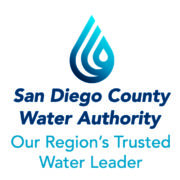Use Our Sustainable Landscaping Project Checklist
When you’re beginning a sustainable landscaping project, it can be challenging to remember all the things you need to consider along the way. Use our Sustainable Landscaping Guide Project Checklist to stay on track and achieve your goals.
- Take the steps you need to prepare your property.
- Make all your plans before you start digging.
- Create your plant design.
- Begin your project installation including your new plants.
- Update and adjust your new irrigation system
- Establish and steward your new landscaping.
And most of all, take time to admire and enjoy your new yard!
Download the project checklist on pages 53-56 of the Sustainable Landscapes Program guidebook, and refer to them when you aren’t sure how to proceed.
This article was inspired by the 71-page Sustainable Landscapes Program guidebook available at SustainableLandscapesSD.org. The Water Authority and its partners also offer other great resources for landscaping upgrades, including free WaterSmart classes at WaterSmartSD.org.




